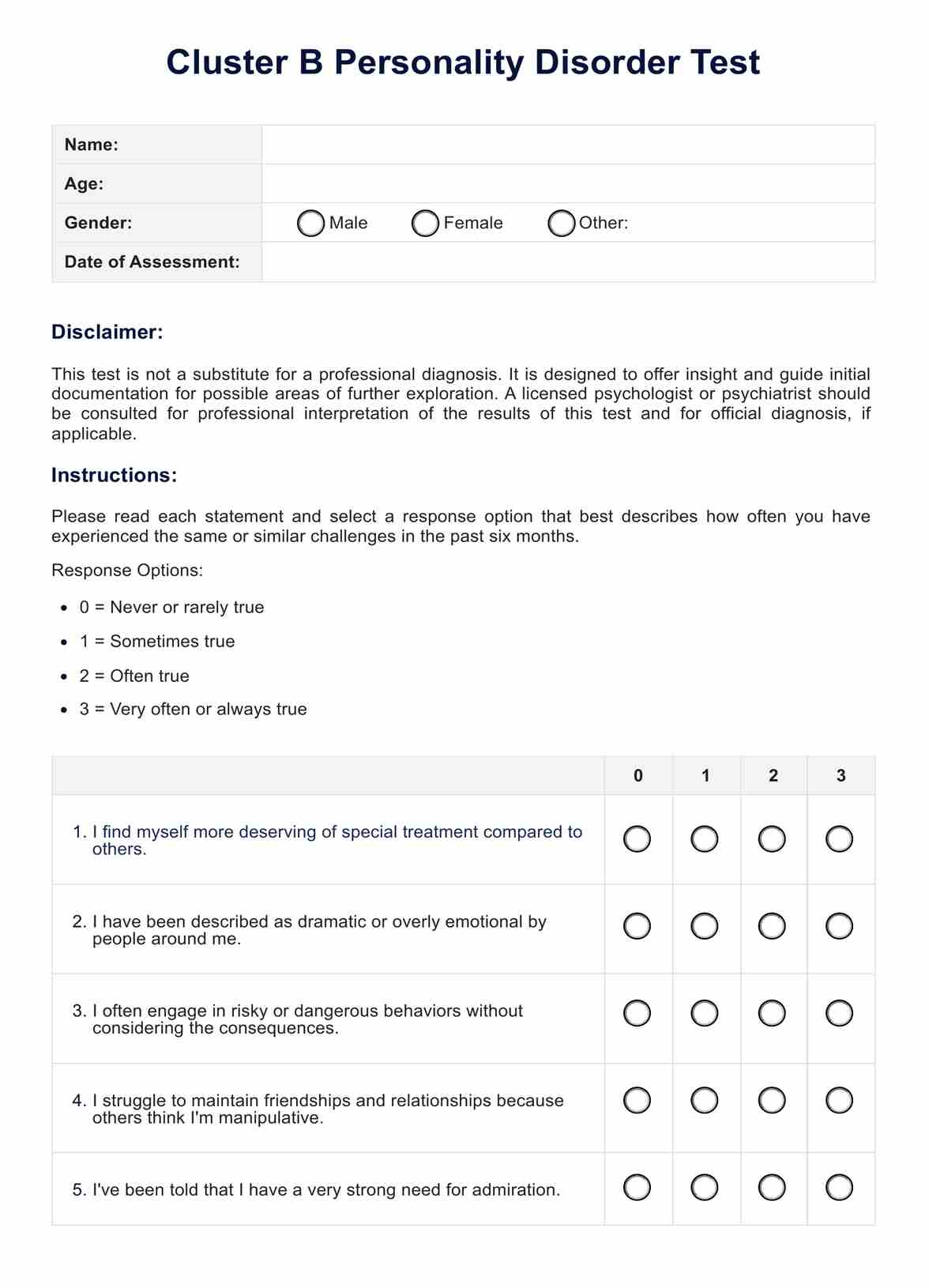There is no one exact cause of Cluster B personality disorders, but a combination of genetic, environmental, and social factors can affect its course and development. Childhood trauma, such as abuse or neglect, can also contribute to the development of these disorders.

Cluster B Personality Disorder Test
Explore using a Cluster B Personality Disorder Test as an initial screening measure for diagnosing personality disorders. Download the free PDF template here.
Cluster B Personality Disorder Test Template
Commonly asked questions
Yes, with proper treatment and support, individuals with a Cluster B personality disorder can manage their symptoms and lead fulfilling lives. Even though these disorders are chronic and can be severe, therapeutic interventions can equip individuals with the skills to handle everyday challenges more effectively.
Diagnosis typically comes from mental health professionals who use structured clinical interviews and standardized scales. A thorough assessment of the patient's behavior, emotions, personal history, and symptoms is done to determine if they meet the criteria laid out by the DSM-5.
EHR and practice management software
Get started for free
*No credit card required
Free
$0/usd
Unlimited clients
Telehealth
1GB of storage
Client portal text
Automated billing and online payments











